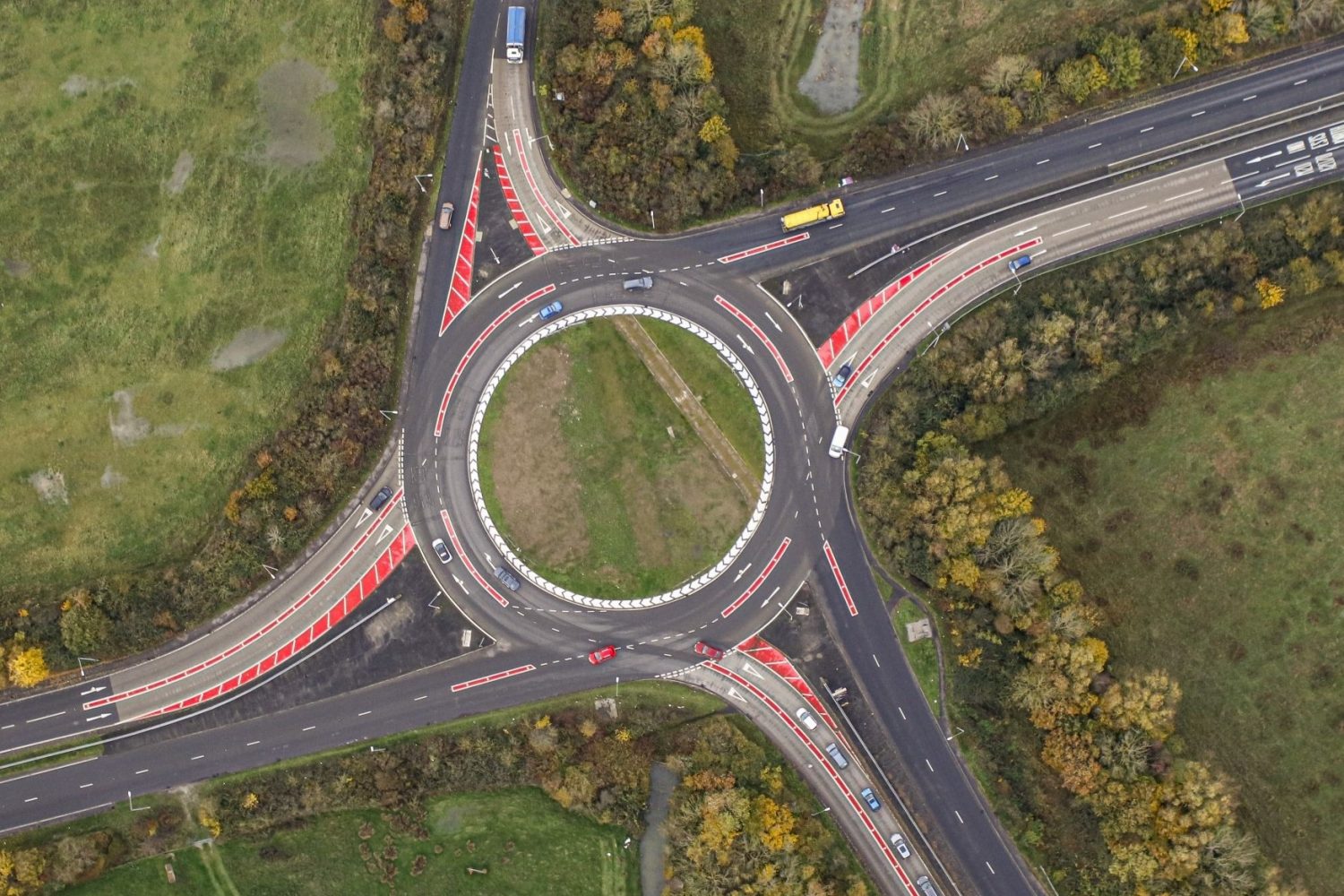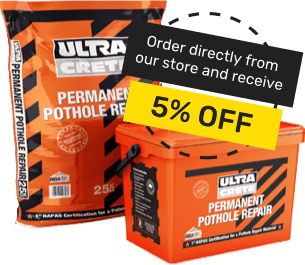Fact Box
Client
Kent County Council
Location
Ashford
Faced with a significant increase in traffic, Kent County Council (KCC) were looking to renovate the existing roundabout at the junction of A2070 with A2042 Romney Marsh Road, a key artery into Ashford and a main point of access to the popular Ashford Designer Outlet.
Looking to reduce the number of accidents and better manage traffic, KCC looked to a design developed in the Netherlands, known as a ‘turbo roundabout’. Turbo roundabouts have been widely adopted in mainland Europe, but were still largely untested in the UK.
By using a series of high-visibility road markings, drivers approaching a turbo roundabout are guided towards the correct lane based on their desired exit point. This limits both weaving movements and potential contact points, reducing traffic collisions by as much as 72%.
The Problem
Given the amount of traffic using this roundabout, the markings would have to be laid in an extremely short timeframe, and planned in a way that minimised disruption. The project was programmed to last for four days, with the road staying open under lane closures for the full duration of the work.
The complexity of the turbo roundabout design – rarely used in the UK before – required the use of several materials to create a number of new markings in a specific configuration. As a trial site, the job also had to be of sufficient quality and value to make a case for a further rollout.
In addition, there were plans to rename the site to Flanders Roundabout and erect World War 1 themed installations, as a mark of tribute both to the war and the Netherlands, where the turbo roundabout design originates from. This would present its own design considerations, and also bring more attention to the roundabout, making it an important and highly visible project.
The Solution
Hi-Way Services planned to deploy a four-person crew to lay the markings for the new turbo roundabout. A combination of hard-wearing red and white MMA markings was chosen for the majority of the markings on the roundabout, while white thermoplastic markings would mark areas of the approach where fewer cars would be switching lanes.
For the MMA markings we opted to use Hitex’s PumaTrack, a combination of MMA binder, environmentally-friendly pigments, aggregates and fillers. This was due to its bright and weather-resistant colouring, durability, and extremely fast manual application.
Traffic management was carefully planned to ensure that the road stayed open while the markings were completed in phases. One lane would be closed at a time in order to create a sterile environment for applying the markings, before that lane was reopened to work on the next one.
The Results
Beginning in September 2019, the four-person crew successfully applied 500 m/² of Red MMA PumaTrack markings to create the turbo roundabout, including white MMA & Thermoplastic arrows, hatching, chevrons, centre line and give-way markings.
The entire project took four nights, with traffic successfully managed through the use of phasing. Disruption was kept to an absolute minimum, and the project was completed on budget.
The resulting work fulfils the goals of the turbo roundabout design, and has become an attractive centrepiece for KCC’s plans to turn the roundabout into a WW1 memorial. You can see the results in the council’s impressive aerial photography of the site below.

